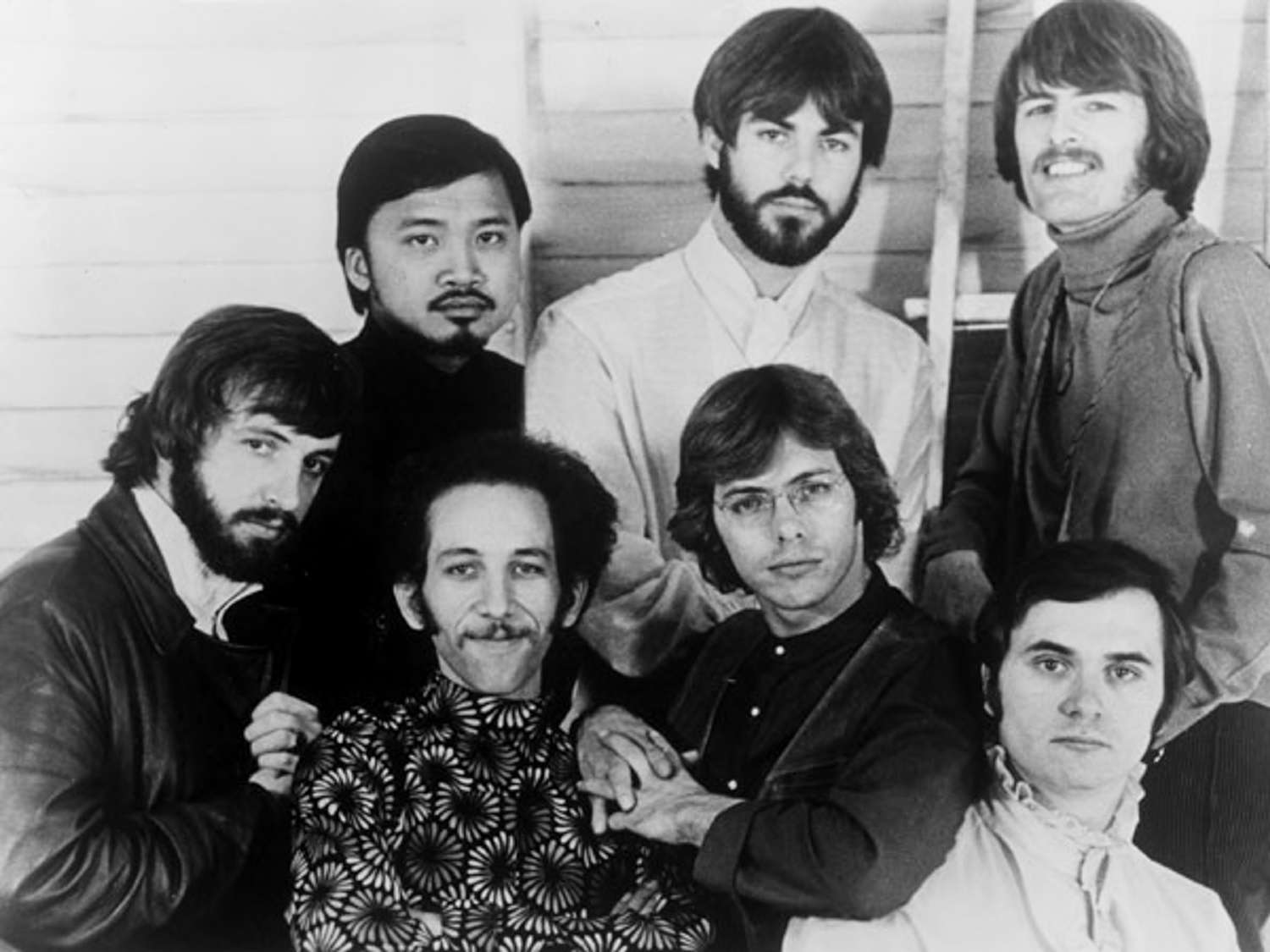There are songs that announce themselves with fireworks, and there are songs that take your hand quietly and don’t let go. “Cherish” by The Association belongs to the latter camp—a tender, slow-blooming ballad that helped define the grammar of 1960s sunshine pop while revealing just how potent understatement can be. Written by founding member Terry Kirkman and produced by Curt Boettcher, the track appeared on the band’s debut LP And Then… Along Comes the Association (1966), a record whose very title hints at a new arrival—and, indeed, a new kind of carefully arranged pop built on precision vocal blend, delicate instrumental touches, and elegant studio craft. The album, arriving on Valiant Records in July 1966, peaked at No. 5 on the U.S. charts and housed two major hits: the Top 10 “Along Comes Mary” and, as its centerpiece, “Cherish,” which climbed all the way to No. 1.
The album framed a new sound with a bold confidence for a debut, blending folk-rock, baroque-pop, and the radiant warmth characteristic of sunshine pop. Boettcher’s production was already fully formed, layering harmonies with bright yet transparent mixes accented by classical chamber music textures without pretension. As a pivotal work, this album is not just a collection of songs but a milestone in music history, where “Cherish” emerged as the jewel that cemented The Association’s reputation.
The record features an extraordinary ensemble of seasoned session musicians alongside the six-member vocal group, wielding instruments like celesta, vibraphone, oboe, and keyboards, which together create a rich, emotional palette far beyond the typical guitar-bass-drums setup of the era. The delicate and shimmering instrumentation gives every note of “Cherish” narrative weight.
Released as a single in August 1966, “Cherish” shocked the charts by reaching No. 1 on the Billboard Hot 100, dominating the top spot for three consecutive weeks and also topping the Canadian charts. During a time dominated by energetic garage rock and British Invasion bands, it was this slow, modest-tempo ballad that outshined in sophistication and emotional depth. The song wasn’t about volume but about how it out-sings, out-arranges, and profoundly out-feels — a masterpiece of emotional subtlety.
One of the most stunning aspects is the recording’s fidelity and its orchestration. The inclusion of celesta, vibraphone, chimes, and brushed drums creates an evocative, almost chamber ensemble-like atmosphere balancing perfectly with The Association’s breathtaking vocal harmonies. The celesta in particular adds a shimmering, child-like glow around the vocals, complementing the delicate vibes and subtle guitar foundations, crafting a soundscape where every delicate sound matters.
The structure of “Cherish” also plays a vital role. The song features two bridges, the second raising the key by a whole step—a subtle but powerful shift likened to a deep, emotional breath before admitting vulnerability. Producer Boettcher’s choice to label the track as “3:00” despite edits and speeding up for radio time shows a clever acknowledgment that feeling trumps clock precision.
Harmony tells a story here. Vocal arrangements do the heavy lifting of emotional storytelling, weaving layers of doubt, hope, and bittersweet reflection around Kirkman’s soft lead. Unlike many ballads that use vocal embellishments, the backing vocals widen intervals and stagger entries to bring tension and release, mirroring the song’s lyrical ambivalence and introspective questioning of love versus yearning.
Musically, elements of country and classical sensibilities intertwine beneath the pop surface. The subtle guitar picking inherits folk-crossing nuances, while the classical touches come through in the orchestration—the celesta and vibraphone acting like tiny lamps illuminating the track without overpowering it. This fusion anchors the so-called baroque-pop style, blending formal vocal writing with sophisticated timbral colors that were revolutionary for its time.
Lyrically, “Cherish” is courageous in hesitation. Instead of rushing to declarations of love, it dwells in uncertainty—an emotional state inviting listeners to experience longing and doubt side by side. This restraint extends to the song’s performance, which eschews climaxes in favor of a gentle, steady glow.
Production choices remain strikingly relevant decades later: Boettcher’s transparent voicings, clean stereo spread, and avoidance of harsh midrange clutter create clarity and space for the human voice to shine. The split recording sessions—instrumentals done at Gary S. Paxton’s converted garage studio and vocals recorded separately at Columbia’s Hollywood studios—reflect a meticulous approach rare and remarkable for the 1960s.
Even in 2025, “Cherish” endures by making excellent choices on every level—melody, harmony, arrangement, and mix. Its quiet dynamic invites keen listeners closer, revealing fresh musical details with each listen. Modern streaming editions may vary in how they handle the song’s sparkling celesta and chimes, but the right headphones transform the experience from pretty to profoundly present.
For musicians, there’s much to learn: guitar restraint in simple triads, piano register discipline to add air, and vocal background parts that frame without competing, leaving room that makes every re-entry inevitable. These principles aren’t just period relics but durable, timeless lessons for crafting emotive music.
“Cherish” has truly woven itself into the cultural fabric, covered extensively and hailed as a quintessential soft pop touchstone of the 1960s. It remains a testament that softness and understatement can command mass appeal and emotional authenticity in a way few songs achieve.
In the words of music critics and listeners alike, the power of “Cherish” lies not in its loudness but in its subtle emotional architecture—a delicate masterpiece that teaches us to listen deeply for the tiny, vital details that create enduring musical magic. If you’ve only heard it as background, take a fresh, focused listen—you’ll uncover the profound artistry in every breath and every carefully placed note, a sound that is as fresh and moving today as it was over half a century ago.
